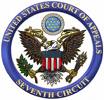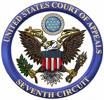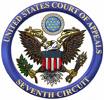Seventh Circuit Week in Review, Part I: Of Brothels and Woodsheds
 The Seventh Circuit had a busy week, with eight new opinions in criminal cases. In this post, I’ll discuss three that deal primarily with substantive criminal law issues. A subsequent post will cover the sentencing and procedure cases.
The Seventh Circuit had a busy week, with eight new opinions in criminal cases. In this post, I’ll discuss three that deal primarily with substantive criminal law issues. A subsequent post will cover the sentencing and procedure cases.
Two of the opinions in this post deal with the difficult and important question of whether it is money laundering when a brothel purchases advertising. But, before getting to that question, I’ll discuss a case that offers an unusual dressing-down of a federal prosecutor. (There’s actually a pun in that last sentence — read on to see what I mean.)
The legal question in United States v. Farinella (Nos. 08-1839 & 08-1860) was whether those “best when purchased by” labels you find on food packages really mean anything to consumers. Do they indicate that spoilage is imminent, or are they essentially meaningless marketing devices, akin to claims that a product is “new and improved?”
Farinella, the defendant, purchased 1.6 million bottles of “Henri’s Salad Dressing” for resale at so-called “dollar stores.” He presumably bought them at a discount because the bottles were past, or at least fast-approaching, the “best when purchased by” date stamped on each bottle by the manufacturer. The manufacturer’s label would obviously make resale more difficult, but Farinella solved this problem by covering the original labels with new labels listing a later purchase date. Of course, no one would hold this up as a model of business ethics. But was it a federal crime?


